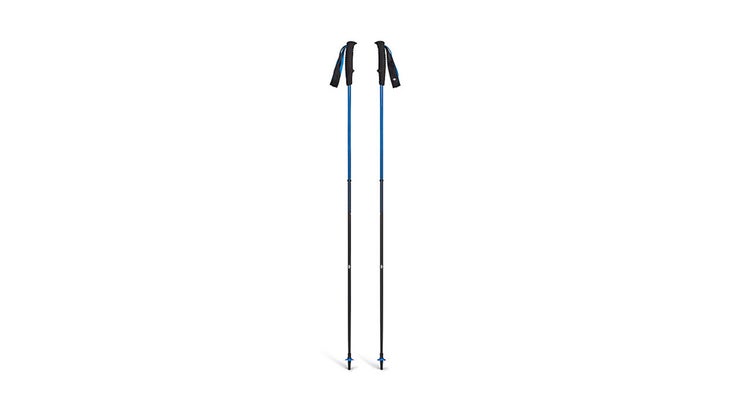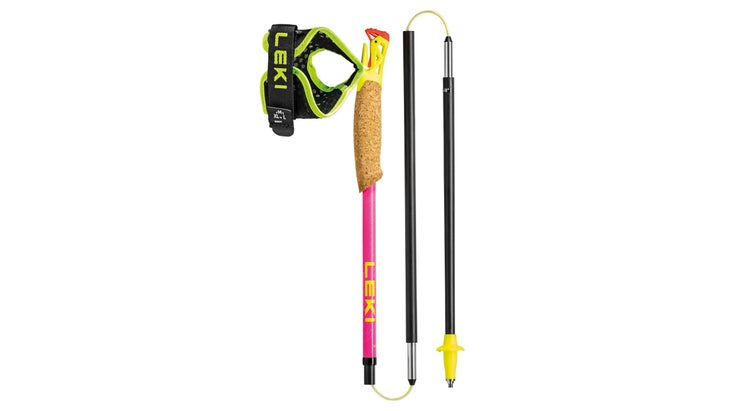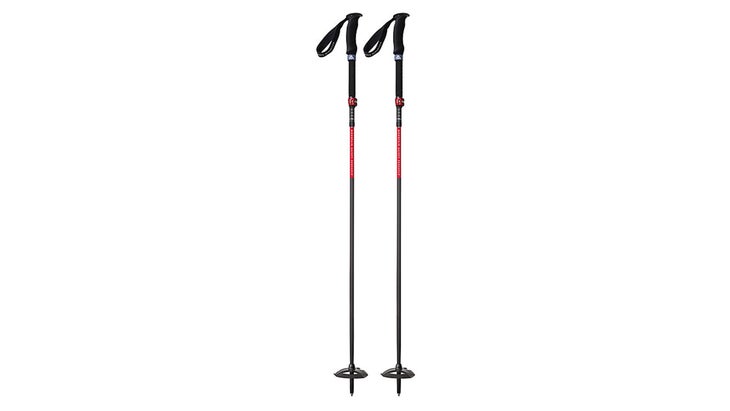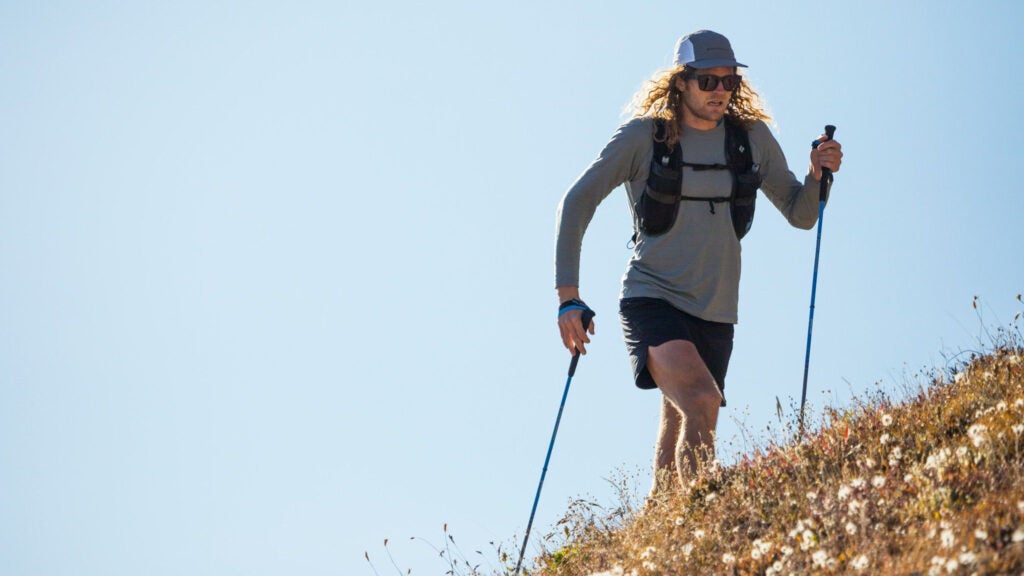No products in the cart.
Outdoor Adventure
I Never Used to Run with Poles. Now I Won’t Hit the Trails Without Them.
Outside’s long reads email newsletter features our strongest writing, most ambitious reporting, and award-winning storytelling about the outdoors.
The first time I used poles for running was in 2008 at a vertical kilometer race in the Italian Dolomites. The slope was so steep I practically scraped my chin on the mossy grass growing on the ascent. I had previous pole experience from years of Nordic skiing, mogul competitions, and even some ski ballet, where I used oversized poles to assist with tricks. But in Italy, I learned the value of using a tool to help propel myself up excruciating slopes. The light, stiff poles let me use my arms in addition to my gassed legs to lighten the load, reduce my effort, and aid my ascent. And, I found they required little in the way of skill or training to reap the benefits. I believe one reason American trail and ultrarunners consistently lose races to their European counterparts is that their continental competition consistently trains and races with the aid of poles on their long, steep trails.
I’ve since learned that poles are not only convenient on big ascents but also useful when you are well into a long run. When you’re fatigued and on new terrain, poles give you a feel for the trail—especially at night or when your sight is compromised—and they make noises to warn animals of your presence in the backcountry. They are also convenient on multiday fastpacking efforts, when they can double as tent poles for lightweight shelters and, in the case of an emergency, as splints for damaged limbs.
On runs and races of any distance, poles can also keep you upright when the footing gets slippery. “Poles are a runner’s friend when it comes to running on slick wintery surfaces,” says Jeff Colt, a professional trail and ultrarunner with On Running and Ultimate Direction.
Any light trekking pole can be used for running, but just as material and design advances have refined poles for the Nordic, skimo, and hiking markets, running-specific poles are more fine-tuned than ever. If you’re going to use them primarily for running, you’d do well by choosing poles made to meet the needs of the runner, from grip to portability. Here are three of the best running poles on the market.
Black Diamond Distance Carbon Running Poles ($170)

Weight: 3.1 ounces per pole
These carbon poles are the stiffest and lightest on the market, thanks to the “fixed” design that doesn’t collapse or pull apart. The downside: You must carry them at full length when you’re not using them. Fortunately, the 47-inch poles (they come in lengths ranging from 39 to 51 inches) were light enough that I barely noticed them when I wasn’t using them to push me forward, and Black Diamond even thought to add a label mid-shaft to mark where to hold them to keep them balanced when carried.
I also appreciated the EVA foam handgrips, made of recycled materials, which were lightweight and didn’t get clammy. The poles even come with interchangeable rubber and metal tips, which can be swapped out depending on the surface you’re most likely to encounter on the run. And, if they get in the way, you can remove the low-profile baskets.
Colt told me he uses the Distance Carbon Running Poles for his workouts and faster mountain efforts and during short, steep, Vertical Kilometer style races. “If I am doing a hill workout with 5 repeats on a 1,000ft climb, I’ll use these poles and won’t worry about collapsing them, as they are quite light and I’m taking it easier on the descents as is,” he says.
The Distance Carbon Running Poles do pose a problem when traveling long distances, especially via air, because they require special handling outside normal luggage processing. They are not unlike fixed-length fly fishing rods that way. An easy alternative is the brand’s Z Poles, which are slightly heavier and lose some efficiency from the tri-fold design. Colt says he uses the Carbon Z Poles ($190) for big mountain adventures and races.
LEKI Ultratrail FX.One Superlite ($220)

Weight: 4.8 ounces per pole
LEKI has made a big push to dominate the ultradistance running scene and their poles were everywhere in Chamonix, France in late August during the UTMB and its related races. LEKI poles stand out from others because of an integrated “Trail Shark,” system with dedicated gloves that snap into the poles. The snug gloves are designed to transfer power directly from each hand to the center of the pole. Hooks make it easy to click the strap in, even on the run.
While the poles were effective in transferring arm power into forward movement, I found some drawbacks. The largest was that the Trail Shark system forced me to use LEKI’s glove and prevented me from swapping out for a more comfortable one, or a warmer one when the weather changed on the run. It also discouraged me from eating chocolate at aid stations for fear of getting food stains on the gloves.
On the plus side, the Ultratrail FX.One Superlite was easy to collapse and fold into three segments for ease of carrying or stowing away in a belt or vest. At a mere 4.8 ounces per pole, they are, indeed, super light. LEKI also offers an optional trail running basket and concave carbide tip to provide grip in all conditions.
MSR DynaLock Ascent Carbon Backcountry Poles ($170)

Weight: 1 pound, 2 ounces per pole
For those who prefer simple versatility, MSR’s DynaLock Ascent Carbon Backcountry Poles are easily collapsible and don’t require the use of dedicated gloves. The EVA foam grips even offer a variety of hold options. Compared to the other poles in this review, the DynaLocks’ plainness is what makes them so appealing: they don’t require an operation manual.
The Kevlar-reinforced carbon fiber poles allow for nearly eight inches of length adjustment on the fly, using the convenient tool-free aluminum DynaLock mechanism. They fold in thirds for easy stashing and the poles come with removable winter baskets so they can be used all four seasons. Unfortunately, at just over a pound each, they are considerably heavier than the other poles in this review, but that heft also promises to make them more durable, as they are anything but flimsy. They are likely the only set of poles you’ll own, given their utility for a variety of activities.
Source link

